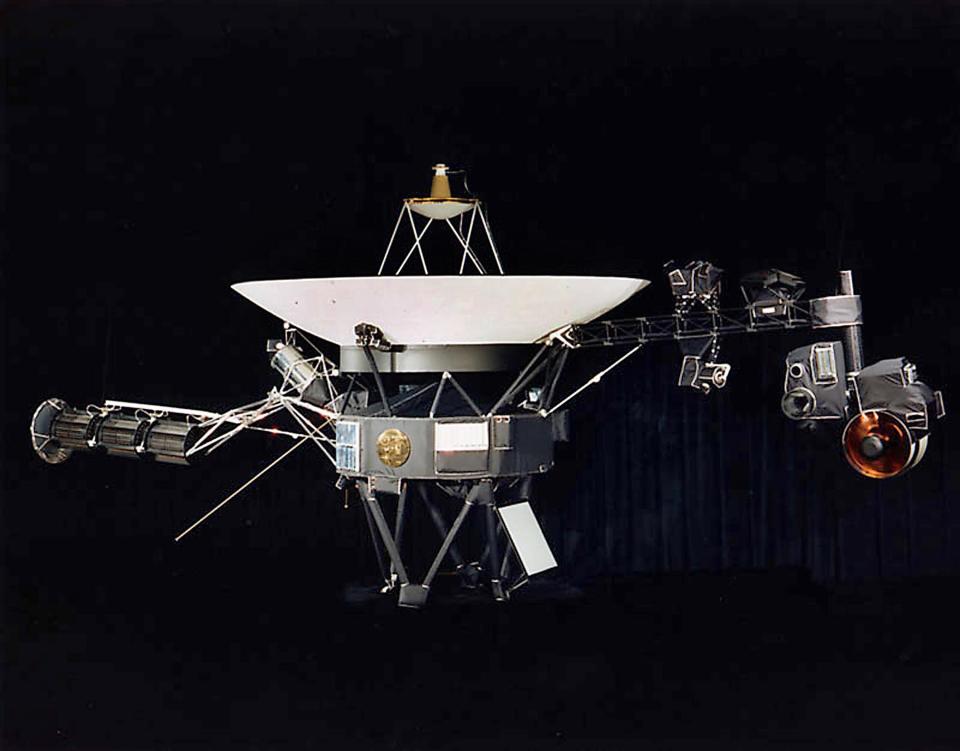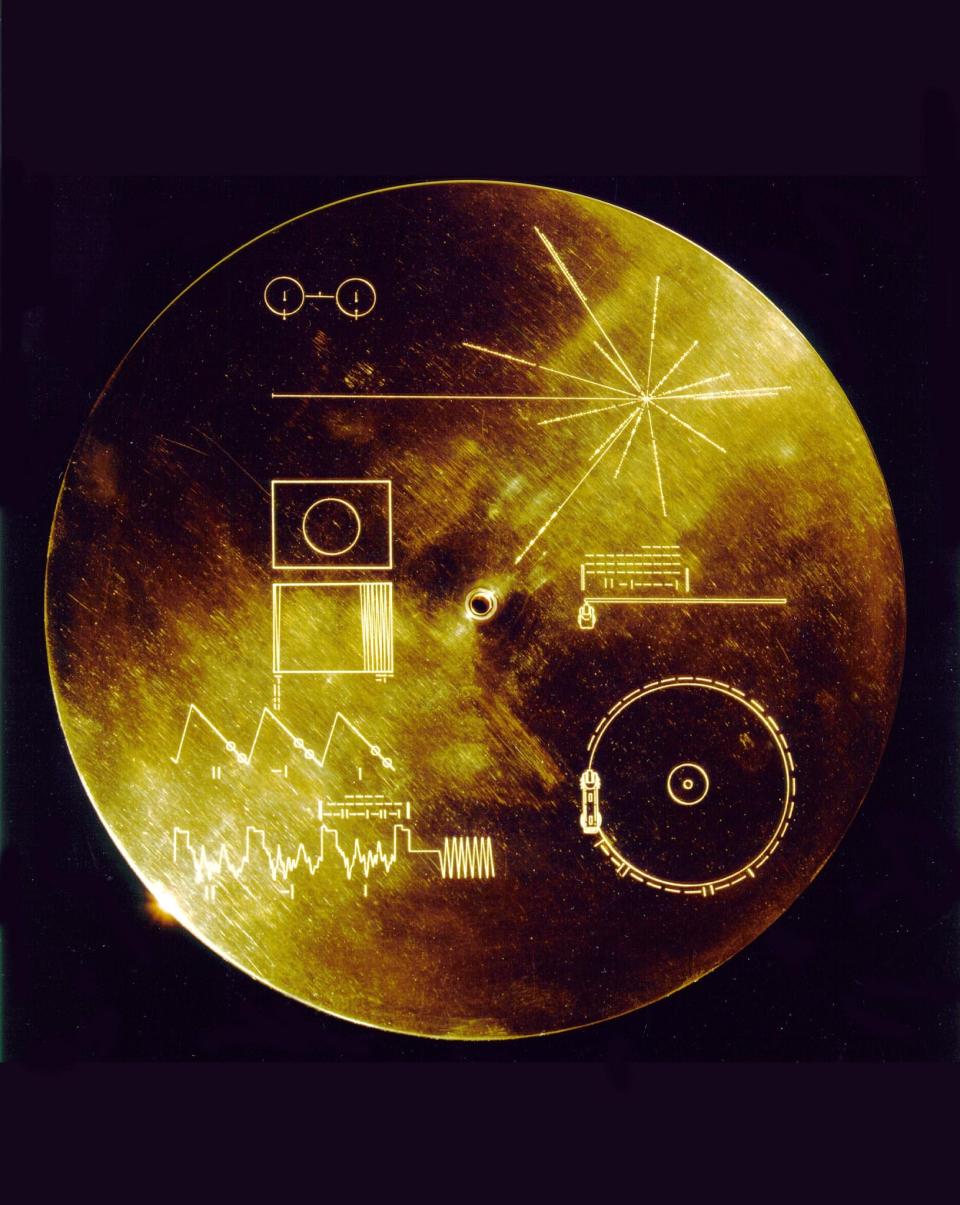NASA gave Voyager 1 a 'poke' amid communication woes. Here's why the response was encouraging.
The mission of one of NASA's twin Voyager space probes has been in peril for months as the space agency has been unable to receive usable data from the craft launched 46 years ago to explore the far reaches of the cosmos.
But a recent "poke" sent to Voyager 1 as it travels 15.1 billion miles away from Earth has given engineers a reason for optimism when they received a response earlier in March.
Mission control prodded Voyager 1 and received a new signal March 3 that they began working furiously to decode days later. By March 10, the team determined that what they had was a memory readout, which may contain valuable data to allow them to restore regular communications with Voyager 1, NASA said.
The 46-year-old pioneering probe has continually defied expectations for its lifespan as it ventures further into uncharted territory of the cosmos. NASA had hoped Voyager 1's extended mission would allow the spacecraft to beam back valuable data through 2025.
But a communication breakdown in November put that goal in peril.
SpaceX launch: Starship lost, but successful in third test; here's what happened in past launches
Unexpected issue caused Voyager 1 to send home gibberish

Voyager 1 has never ceased sending a steady radio signal to ground control operators on Earth, but that signal has not carried any usable data since November, NASA said.
Instead, the probe's telemetry modulation unit began sending a nonsensical repeating patterns of code.
The space agency traced the source of the communication breakdown to one of the spacecraft’s three onboard computers, known as the flight data subsystem, which is responsible for packaging the science and engineering data before it’s beamed to Earth.
In order to figure out what was going on, mission control sent a "poke" March 1 commanding Voyager 1's flight data subsystem to run different sequences in case a software corruption was causing the issue. Within two days, NASA got the response for which it hoped.
On March 3, the Voyager mission team noticed that activity from one section of the flight data subsystem, was different from the rest of the computer's unreadable data stream. Because it still wasn't in the format used by Voyager 1 when it's properly sending data, the team was confused.
The array of giant radio network antennas known as the Deep Space Network that communicates with both Voyager probes decoded the signal and found that it contained a readout of the subsystem's entire memory – its coding, as well as the science and engineering data its collected. The discovered readout provided an opportunity for the team to analyze it for discrepancies in the code that could have caused the ongoing issue.
"Using that information to devise a potential solution and attempt to put it into action will take time," NASA said.
What is the mission of NASA Voyager probes?

The twin Voyager probes were launched on separate dates in 1977 from Cape Canaveral, Florida and have since traveled billions of miles away from Earth.
In 2012, Voyager 1 became the first spacecraft to reach interstellar space, followed in 2018 by Voyager 2, according to NASA.
The probes' main mission is to explore the far reaches of our solar system ? and beyond. To that end, the spacecrafts have investigated all the giant planets of our outer solar system ? Jupiter, Saturn, Uranus and Neptune ? as well as the planets' magnetic fields and a combined 48 of their moons, NASA says.
But both Voyager 1 and 2 also carry a greeting to any form of life they may encounter called the Golden Record.
Famed American astronomer Carl Sagan chaired the committee tasked with selecting the contents of the message, contained on a 12-inch gold-plated copper disk. The phonograph records contain aspects that encapsulate life on Earth, such as samples of music from different cultures and eras, natural and man-made sounds from Earth, and electronic information encoded in analog form that an advanced civilization could convert into photographs.
Voyager 2 also recently lost contact with NASA
In July, Voyager 2 also experienced a communication breakdown with mission control when its antenna was inadvertently pointed into the wrong direction.
Contact was lost July 21 with Voyager 2 after mission control transmitted routine commands that inadvertently triggered a 2-degree change in the craft's antenna orientation and disrupted the deep-space probe's ability to receive commands or transmit data back to Earth.
Fortunately, contact was restored in August when NASA's Jet Propulsion Laboratory sent an interstellar "shout" that successfully commanded the craft, which is now 12.6 billion miles away, to reorient itself.
Eric Lagatta covers breaking and trending news for USA TODAY. Reach him at [email protected]
This article originally appeared on USA TODAY: Voyager 1s 'gibberish' message to NASA decoded after aging probe poked
Solve the daily Crossword

